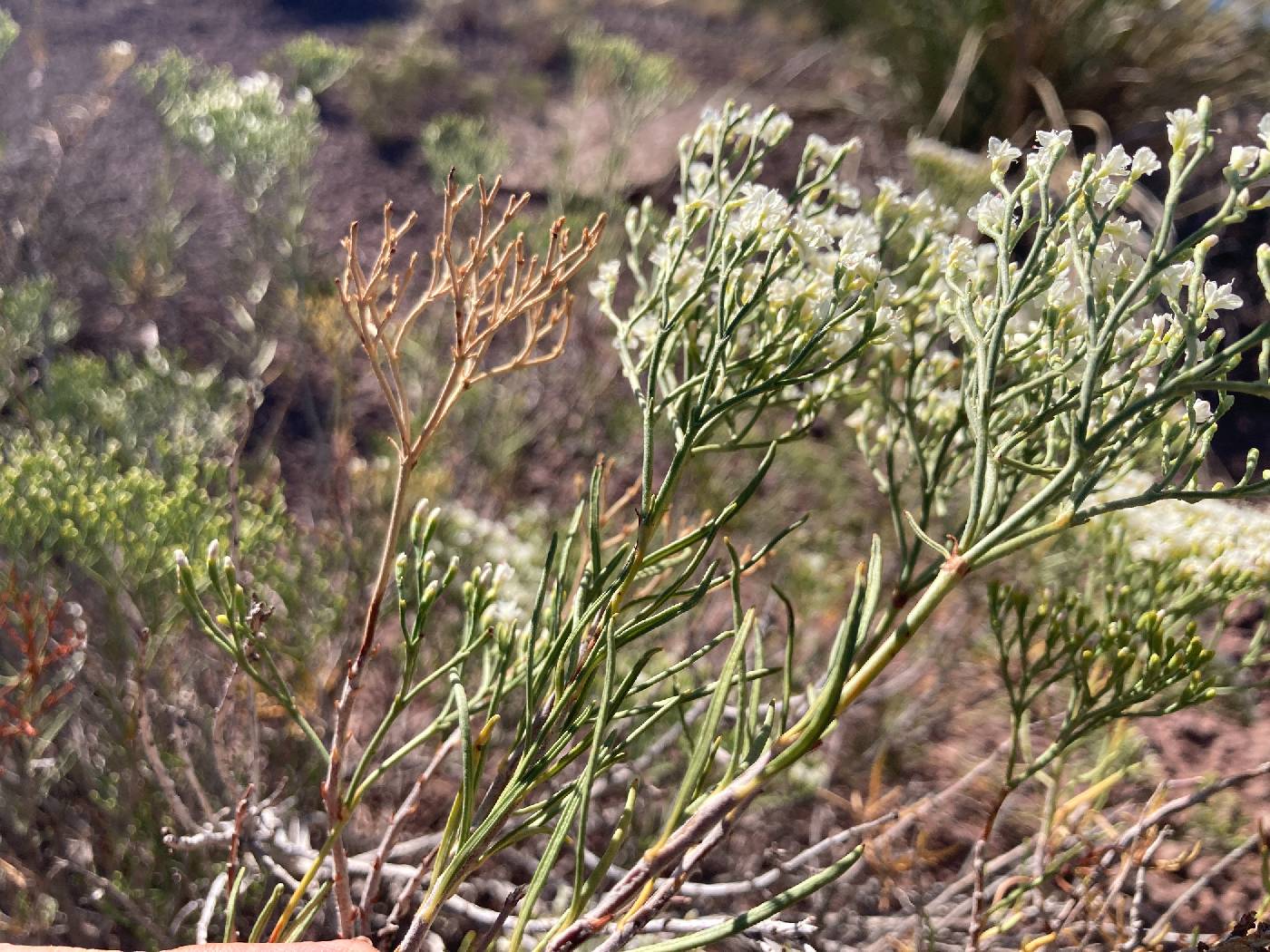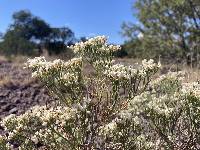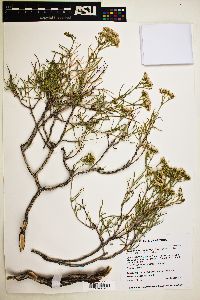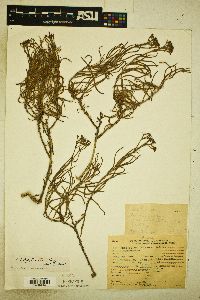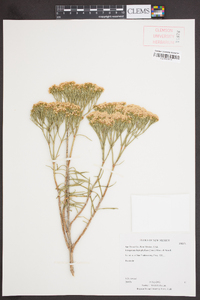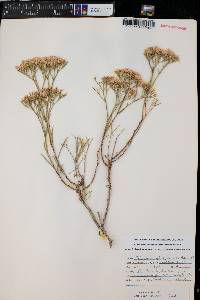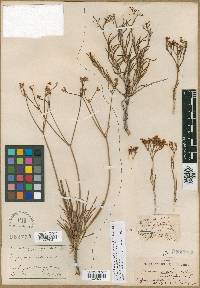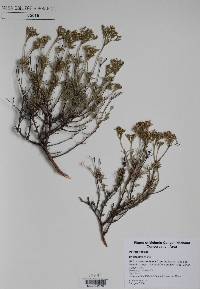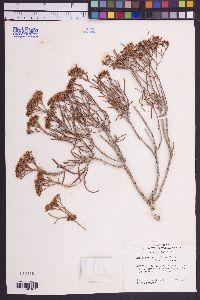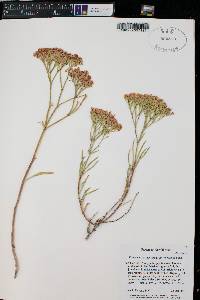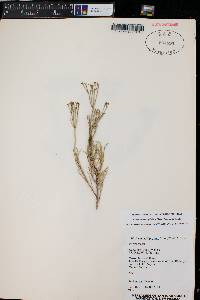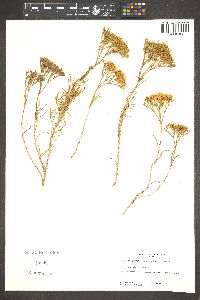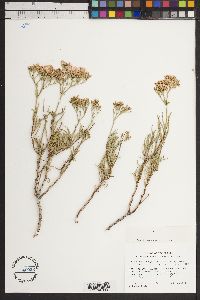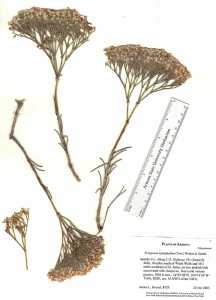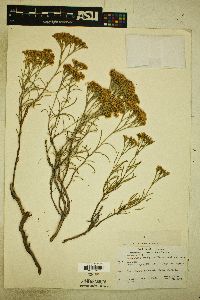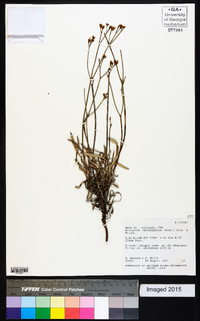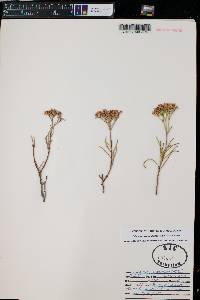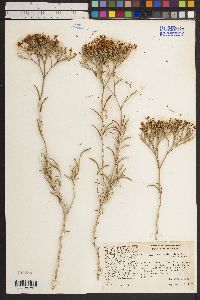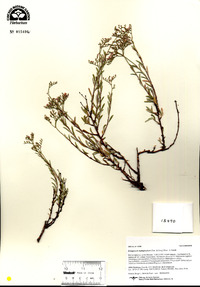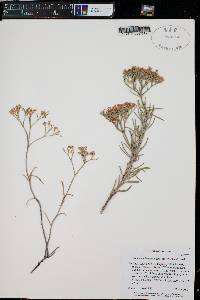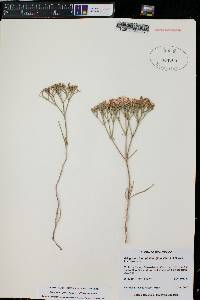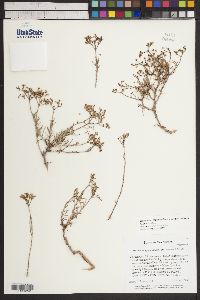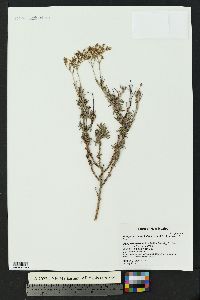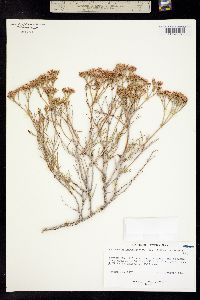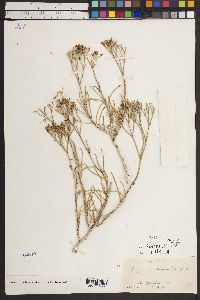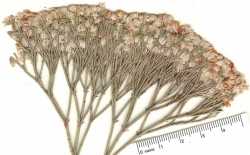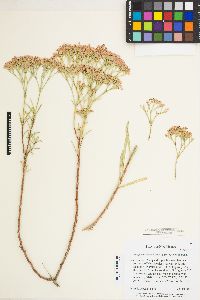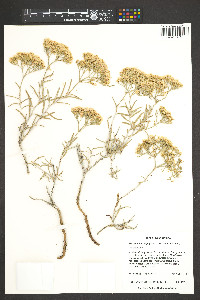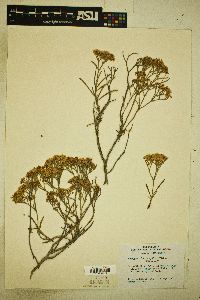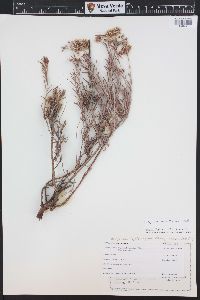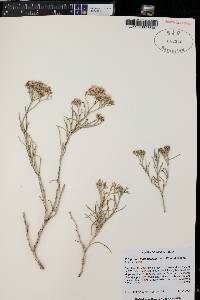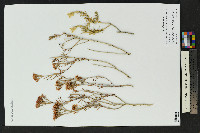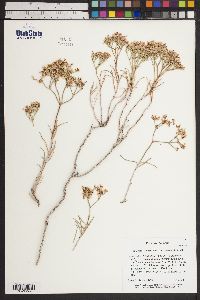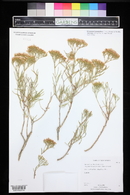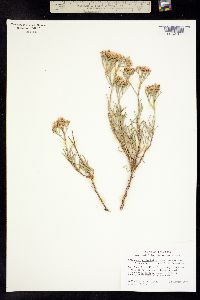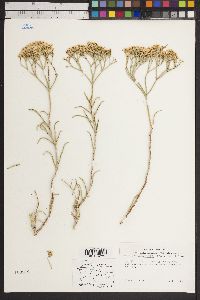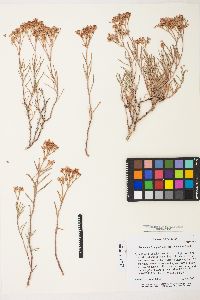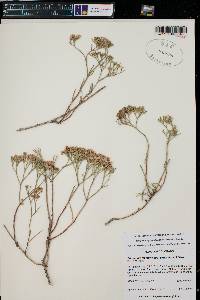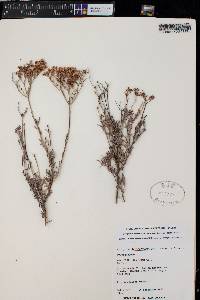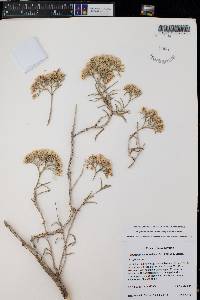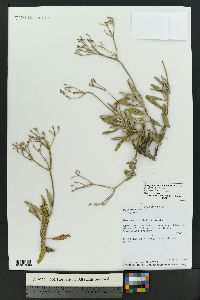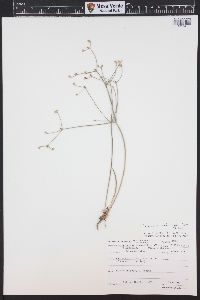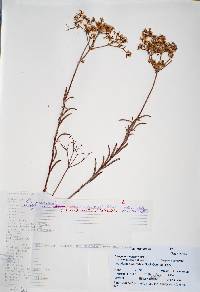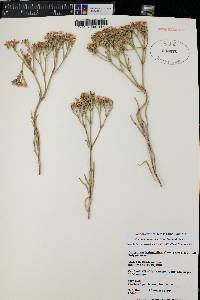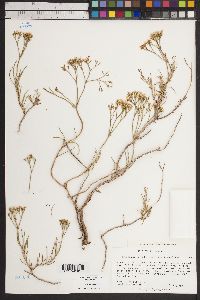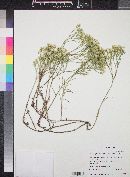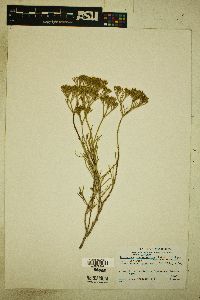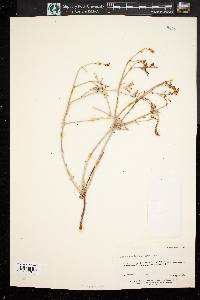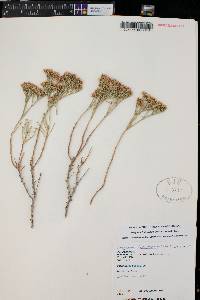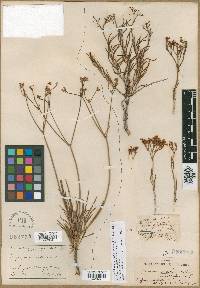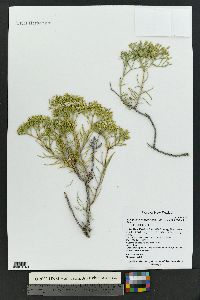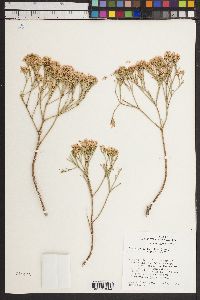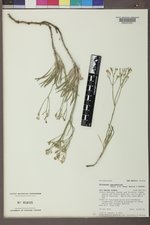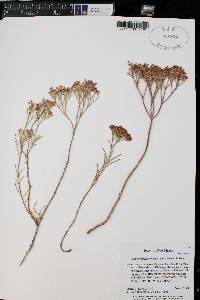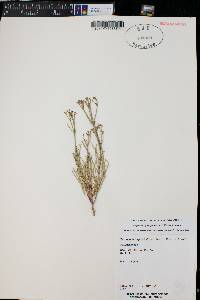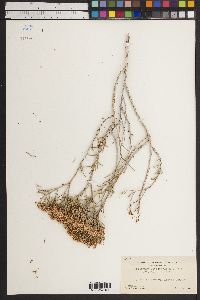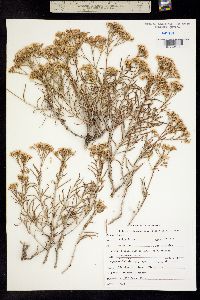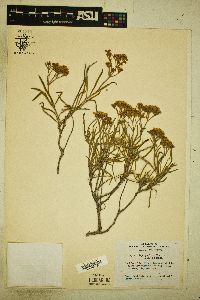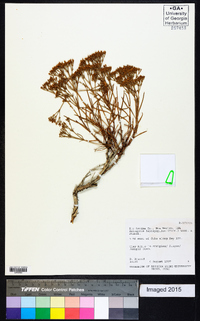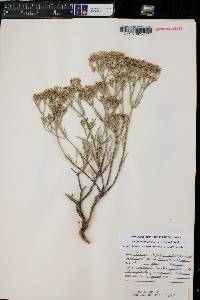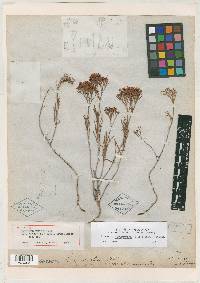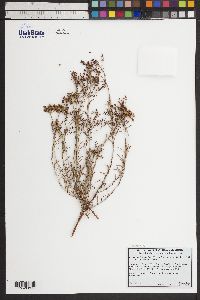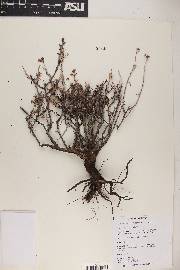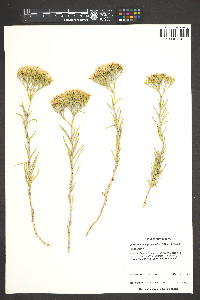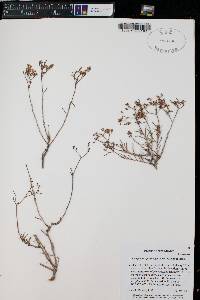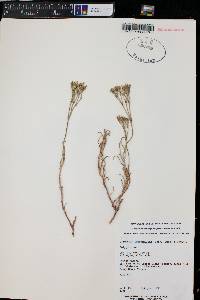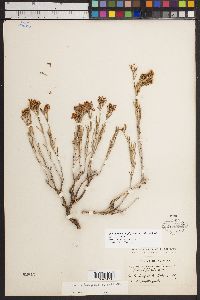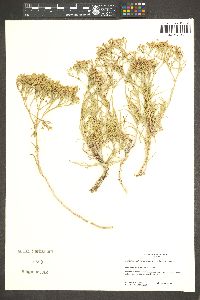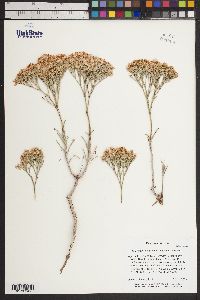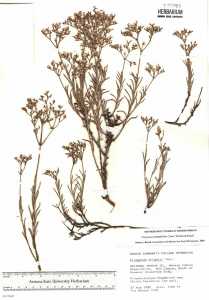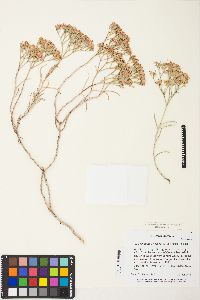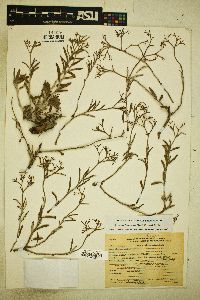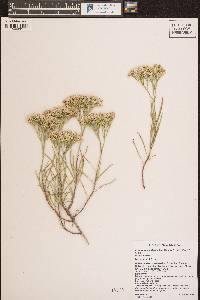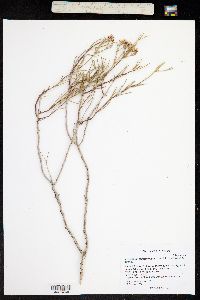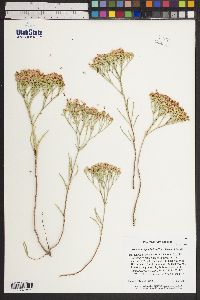
|
|
|
|
Family: Polygonaceae
Slender-Leaf Wild Buckwheat, more...slenderleaf buckwheat, slender-leaf buckwheat
[Eriogonum effusum var. leptophyllum Torr. & A. Gray, moreEriogonum microthecum var. leptophyllum (Torr.) Torr. & A. Gray] |
Shrubs or subshrubs, rounded to spreading, not scapose, (0.5-)2-8(-13) × (1-)3-15(-18) dm, thinly pubescent or glabrous and green, yellowish green or infrequently grayish, occasionally papillate. Stems spreading, without persistent leaf bases, up to 1/3 height of plant; caudex stems absent or compact; aerial flowering stems spreading, slender, solid, not fistulose, (0.05-)0.1-0.8 dm, thinly pubescent or glabrous. Leaves cauline, 1 per node or fasciculate; petiole 0.05-0.1 cm, tomentose to floccose or glabrous; blade linear to linear-oblanceolate, (0.5-)2-6 × (0.03-)0.1-0.3 cm, densely to thinly white-tomentose abaxially, thinly so or glabrous and green adaxially, margins tightly revolute. Inflorescences cymose, usually compact, (0.1-)2-12(-15) × (1-)4-15(-30) cm; branches dichotomous, thinly pubescent or glabrous; bracts 3, scalelike, triangular, (0.5-)1-4 mm. Peduncles absent or erect, 0.05-0.2 cm, glabrous. Involucres 1 per node, narrowly turbinate, 2-4(-4.5) × 1-2 mm, glabrous; teeth 5, erect, 0.3-0.7 mm. Flowers 2.5-4 mm; perianth white, glabrous; tepals connate proximal 4, essentially monomorphic, oblong to narrowly obovate; stamens long-exserted, (2-)3-6 mm; filaments subglabrous or sparsely puberulent proximally. Achenes brown, (2.5-)3.5-4 mm, glabrous. 2n = 40. Flowering Jul-Nov. Clayey flats, slopes, and outcrops, mixed grassland and sagebrush communities, pinyon-juniper woodlands; 1500-2300 m; Ariz., Colo., N.Mex., Utah. Eriogonum leptophyllum is found mainly on southern Colorado Plateau in San Juan County, Utah, and adjacent Montezuma County, Colorado, southward into Apache County, Arizona, and in northwestern New Mexico (Bernalillo, Cibola, McKinley, Rio Arriba, Sandoval, San Juan, Santa Fe, and Taos counties). The species is found rarely in eastern Coconino and Navajo counties, Arizona, in the north, and in northern Gila County, Arizona, to the south. It is disjunct to the Bitter Spring Creek area of Capitol Reef National Park in Garfield County, Utah (R. Fleming 199, SJNM). The species, when dwarfed as it sometimes is on wind-swept ridges, resembles E. microthecum var. simpsonii, and has a form and aspect much more typical of that species than of the large, mature plants of E. leptophyllum. Mature plants on the southern edge of the range (as in McKinley County) tend to be grayish rather than the more common yellowish green seen elsewhere. This species is considered a 'life medicine' by the Navajo (Diné) people (C. Arnold, pers. comm.), being used in a variety of ways, including as an analgesic, a gynecological aid, a snake-bite remedy (D. E. Moerman 1986), and in casting spells (Arnold Clifford, pers. comm.). P. A. Vestal (1952) listed similar uses of this species by the Ramah Navajo of northwestern New Mexico, including an infusion of roots for stomach trouble, a decoction of the whole plant for snake bite, and for postpartum pain. The species is cultivated occasionally as a horticultural novelty. There are two anomalous populations of particular interest. These occurred in the Broomfield area of San Juan County, New Mexico. The specimens are of low, spreading herbs to 0.8 dm with linear-oblong leaf blades 1-2 cm long but only 1-2 mm wide. The inflorescences are cymose but typically with one branch suppressed. A peduncle is present in some, this being up to 3.5 mm and erect; it is always at the basal node of the inflorescence. The involucres are turbinate and long (4-6 mm). A mature achene has not been observed. The plants flowered in late May and early June. Efforts to find such plants again have been unsuccessful. Searches in the late summer and early fall, when they ought to be in fruit, have found only plants that clearly can be assigned to Eriogonum leptophyllum. Generally, the two anomalous collections, both made by J. Mark Porter in the 1980s, resemble that species. Until such odd plants can be found again, and studied in detail, the significance of those populations cannot be ascertained.
Heil et al. 2013, Allred and Ivey 2012, Martin and Hutchins 1980 Duration: Perennial Nativity: Native Lifeform: Subshrub General: Spreading to rounded subshrub or shrub, 20-130 cm tall and 10-180 cm wide, from a branched, spreading caudex; stems woody near the base, leafy, hairless or thinly pubescent, and green to yellow-green or occasionally grayish. Leaves: Alternate along the stems, occasionally grouped in fascicles; blades linear, 2-6 cm long and 1-3 mm wide, with revolute (rolled under) edges; lower leaf surface usually white-tomentose but this is difficult to see because of the rolled-under edges. Flowers: White to pink, arranged in small clusters of a few flowers held together by a cup-shaped structure called an involucre; involucres arranged in narrow, compact flat-topped inflorescences, 2-12 cm high and 4-15 cm wide, with erect or ascending branches; each individual flower is 3-4 mm long, with 6 petal-like tepals, these white to pinkish, often with pink midveins. Fruits: Achenes trigonous, 3-4 mm long, brown and glabrous. Ecology: Found on clay flats, slopes, and outcrops, from 5,000-7,500 ft (1524-2286 m); flowers July-October. Distribution: e UT, sw CO, NM and AZ Notes: This shrubby Eriogonum is primarily a Colorado Plateau species, with its distribution centered around the four-corners region. It is distinguished by its leaves, which are linear, about 2 cm long, and have obviously curled-under edges that make it difficult to see the white hairs that usually cover the underside of the leaves. It is also distinguished by the narrow, broom-like inflorescences of white to pinkish flowers at branch tips. E. microthecum is similar but has shorter leaves, 1.5 cm long or shorter; hairy involucres, which are the small cup-shaped structures that hold together clusters of a few flowers; and hairy inflorescence branches. (E. leptophyllum has leaves longer than 1.5 cm and hairless involucres and inflorescence branches.) Look for this species in clay soils. Ethnobotany: Used as a Life Medicine by the Ramah Navajo. Etymology: Eriogonum is from the Greek erion, wool, and gony, knee, alluding to the hairy nodes of the first species described, E. tomentosum; leptophyllum means slender-leaf. Synonyms: Eriogonum microthecum var. leptophyllum; E. effusum var. leptophyllum Editor: AHazelton 2017 |

